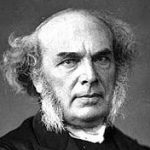Lesson Focus: This lesson is about Jesus’ revealing His glory by turning water into wine, with the result that His disciples believed in Him.
Understand the Mission of Jesus: John 2:1-5.
[1] On the third day there was a wedding at Cana in Galilee, and the mother of Jesus was there. [2] Jesus also was invited to the wedding with his disciples. [3] When the wine ran out, the mother of Jesus said to him, "They have no wine." [4] And Jesus said to her, "Woman, what does this have to do with me? My hour has not yet come." [5] His mother said to the servants, "Do whatever he tells you." [ESV]
[1-2] After calling His first disciples, Jesus takes them along to a wedding in Cana of Galilee, not far from His hometown, Nazareth. There He performs the first of His startling signs, providing His followers with an initial glimpse of His messianic identity. The third day is to be counted from the last event narrated: Jesus’ encounter with Nathanael. Including the first day in the calculation, this means two days later. In conjunction with John’s initial testimony to Jesus in 1:19-28 and the three references to the next day in 1:29,35,43, this completes an entire week of activity. If no information is given regarding the sixth day because it was a Sabbath, the Cana wedding – or at least the day on which Jesus and his disciples joined the wedding party – would have fallen on a Sunday. This may not have been the first day of the wedding, since weddings lasted for a whole week, and it is unlikely that the wine ran out immediately. The village of Cana is mentioned in the New Testament only in John. Despite its insignificance, Cana becomes the site of Jesus’ first and third signs recorded in this Gospel. Jewish weddings were important and joyful occasions in the lives of the bride and the groom and their extended families, and the entire community joined in the celebration. Cana was not far from Jesus’ hometown of Nazareth (less than ten miles), and the fact that the guest list included Jesus and His disciples as well as His mother may indicate the wedding of a close family friend or relative. This may also explain why Jesus’ mother felt responsible to help when the hosts had run out of wine. Note the order in which the evangelist lists those invited to the wedding: the mother of Jesus is mentioned first, then Jesus and His disciples. Mary may have been a friend of the family, helping behind the scenes. The group of Jesus’ disciples presumably included the five mentioned in 1:35-51.
[3-5] In Jewish thought, wine is a symbol of joy and celebration. Prophetic expectation cast the messianic age as a time when wine would flow freely. At a cultural level, running out of wine was considered to be a major social blunder, since the host was responsible to provide to the wedding guests wine for seven days. In the Greco-Roman world, and presumably in the Palestine of Jesus’ day, three kinds of wine were in use: (1) fermented wines, which usually were mixed in the proportion of two or three parts of water to one of wine; (2) new wine, made of grape juice, and, similar to cider, not fermented; and (3) wines in which, by boiling the unfermented grape juice, the process of fermentation had been stopped and the formation of alcohol prevented. Mary’s request to Jesus does not necessarily suggest that she expected her son to do a miracle. More likely, she is simply expressing her general reliance on the resourcefulness of Jesus. Jesus elsewhere makes clear that His relationship with His mother is constrained by kingdom concerns. Jesus’ address of his mother as woman sounds brusque; at the very least, it establishes polite distance. Yet the expression, while not particularly endearing, is not as cold in the Greek as in English. The unusual nature of Jesus’ use of this address for His own mother is underscored by the fact that this practice is without parallel in ancient Jewish or Greco-Roman literature. That this does not mark the absence of filial affection is indicated by the provision made by Jesus for His mother at the foot of the cross where He uses the same language to tenderly commend her to the beloved disciple [19:26]. As Old Testament parallels make clear, the phrase what does this have to do with me, always distances two parties and frequently carries a reproachful connotation. This suggests that Jesus here is issuing a fairly sharp rebuke to Mary, similar to his rebuke of Peter when he failed to understand the nature of Jesus’ calling [Matt. 16:23]. Alternatively, Jesus could be advising His mother that He had already decided to help and that He would do so in the manner and at the time of His own choosing rather than in response to her prompting. The phrase my hour has not yet come is intended to alert the reader to anticipate the arrival of Jesus’ time at a later point in the narrative. In the framework of the entire Gospel, Jesus’ hour refers to the moment at which God is fully glorified in Him: the hour of His death, which for John constitutes also the moment of Jesus’ exaltation (His lifting up [3:14]). In the present instance, Jesus does not want to be forced to a public manifestation of His identity on another’s terms. Later, Jesus’ brothers similarly urge Jesus to make Himself known publicly, failing to perceive that the time to do so had not yet come, and attempts to arrest Jesus fail for the same reason. Jesus’ solution to the apparent quandary is to perform a miracle “behind the scenes.” His timing is perfect, and the host is spared any embarrassment. By acting discreetly, Jesus avoids stealing the spotlight from the groom and his bride, to whom it rightfully belongs. Despite her son’s cool response, Jesus’ mother is not to be deterred. Though she realizes that Jesus will do what He thinks best, she also expects that He will act on her behalf. Though she does not have authority over Jesus, she does express her faith. The fact that Mary is able to give instructions to the servants may indicate that she was helping the bridegroom’s mother with the preparation of dishes. Mary takes what sounded like a sharp rebuke as an indication that Jesus is ready to help; her instructions to the servants express complete confidence, indicating that she took no offense at the words of Jesus.
Experience the Power of Jesus: John 2:6-10.
[6] Now there were six stone water jars there for the Jewish rites of purification, each holding twenty or thirty gallons. [7] Jesus said to the servants, "Fill the jars with water." And they filled them up to the brim. [8] And he said to them, "Now draw some out and take it to the master of the feast." So they took it. [9] When the master of the feast tasted the water now become wine, and did not know where it came from (though the servants who had drawn the water knew), the master of the feast called the bridegroom [10] and said to him, "Everyone serves the good wine first, and when people have drunk freely, then the poor wine. But you have kept the good wine until now." [ESV]
[6-10] The mention of six stone water jars is one of several features of this account that appear to reflect eyewitness testimony. It is the kind of detail someone who witnessed the event might have remembered. For readers unfamiliar with Palestinian Jewish custom, the narrator adds the explanatory note that these jars were there for the Jewish rites of purification. This may have involved the washing of certain utensils used at the wedding and the washing of the guests’ hands. Each jar held from twenty to thirty gallons. This adds up to a total of 120 to 180 gallons for all six jars combined. A large number of wedding guests must be accommodated for the course of an entire week of festivities. Filling the jars with water proves the impossibility of deception or fraud. The performance of the miracle is not actually narrated. After the filling of the jars, the servants were instructed to draw some water from the jugs and take it to the master of the feast. The role of master of the feast was a position of honor, with one of the master’s primary duties being the regulation of the distribution of wine. Apparently the master did not join the wedding party at the table but rather, as a headwaiter in charge of catering, supervised the serving of food and drink, with several servants under him carrying out his orders. Now the focus shifts from the large quantity of the wine to its superior quality. Apparently, it was customary to serve the best wine first, when the wedding guests could still appreciate the taste of good wine before they had had too much to drink. The unsuspecting master of the feast constitutes an independent witness to the occurrence of a miracle. The emphasis on the excellent quality of the wine produced by Jesus coheres with John’s customary emphasis on the extraordinary nature of Jesus’ works. Thus, Jesus will raise the temple that was built forty-six years ago in only three days [2:20]. He not only cures the royal official’s son but does so long-distance, a highly unusual way of working miracles [4:50-53]. He does not merely heal a lame man, but one who has been an invalid for thirty-eight years [5:5]. He feeds the crowds from a supply of only five small barley loaves, and two small fish, when it would have taken eight months’ wages just for each person even to have one bite [6:7,9]. Jesus does not merely give sight to a man gone blind, but one who has been blind from birth [9:2]. And He does not merely raise a dead man, but one who has been dead for four days [11:17]. In the end, Jesus has responded to the need of the hour in an amazing way, while still remaining in the background. On this final day of His first week of ministry, Jesus the Messiah had provided His followers with his first sign.
See the Glory of Jesus: John 2:11; 1:14, 18.
[11] This, the first of his signs, Jesus did at Cana in Galilee, and manifested his glory. And his disciples believed in him. [1:14] And the Word became flesh and dwelt among us, and we have seen his glory, glory as of the only Son from the Father, full of grace and truth. [18] No one has ever seen God; the only God, who is at the Father’s side, he has made him known. [ESV]
[2:11] Verse 11 concludes John’s account of Jesus’ first sign, selected by the evangelist to persuade his readers of Jesus’ messianic identity. It is characteristic of these signs not so much that they arouse wonder and are hard to explain, nor even that they are demonstrations of the divine power, but rather that they point us to something beyond themselves. Manifested his glory harks back to the prologue [1:14,18]. It surely is significant that this revelation of God’s glory in Jesus consists not in a spectacular display of power, but in a quiet, behind-the-scenes work that remained largely unnoticed and impacted only a select few. It is in Jesus’ humanity that God’s glory is revealed. Moreover, this revelation culminates the history of God’s dealings with His people in Old Testament times, fulfilling prophetic symbolism and predictions and lending Jesus’ work an endtime, definitive dimension that sets it apart from previous figures, servants, and spokespersons of God. The messianic age commonly was thought to be the period when God would reveal His glory. Jesus’ first followers continue to show early signs of receptivity to Jesus’ self-revelation, in contrast to the following responses of the Jewish leaders [2:18,20] and the people of Jerusalem [2:23-25]. Perhaps significantly, there is no mention of the impact that the sign had on the master of the banquet, the servants, and the bridegroom, or even Jesus’ mother. Though benefiting from Jesus’ physical provision, the wedding guests were untouched by Jesus’ messianic self-revelation. The lack of reference to faith on the part of Jesus’ mother may also be telling, especially since she is the focus of the earlier portion of the narrative, and should caution against any undue focus on Mary as an ideal disciple.
[1:14, 18] The main burden of 1:14-18 is to identify the Word explicitly with Jesus. Rather than using the words ‘man’ or ‘body’, John here employs the almost crude term flesh. Became or ‘was made’ does not mean ‘changed into’ in the sense that Jesus, by becoming human, ceased to be God. Nor does it mean ‘appeared’ human or even ‘took on’ humanity. The main point is that God now has chosen to be with His people in a more personal way than ever before. The affirmation that the Word became flesh takes the opening statement in 1:1 one step further: that same Word now has been born as a human being. Though John does not elaborate on the precise way in which Jesus was made flesh, his contention that deity assumed human nature in Jesus would have been anathema for Greeks who held to a spirit/matter dualism and could hardly have imagined immaterial Reason (Logos) becoming a physical being. The idea of gods appearing in human form was not uncommon to the ancients. But John makes clear that the Word did not merely become manifest as an apparition – as was alleged by the docetists – but literally was made flesh. John’s message is that the incarnation represents an event of equal importance with creation. Since the world is dark, fallen, and sinful, humanity’s need is for spiritual rebirth, available only through the preexistent, enfleshed Word. The Greek verb translated dwelt, more literally means “to pitch one’s tent.” This term suggests that in Jesus, God has come to take up residence among His people once again, in a way even more intimate than when He dwelt with Israel in the wilderness’ tabernacle. Moses met God and heard His word in the tent of meeting [Ex. 33:9]; now, people may meet God and hear Him in the flesh of Jesus. Jesus, “pitching his tent among us” is here related to the incarnation, that is, His being made human flesh; according to John, Jesus took the place of the temple. In Jesus, His followers saw the glory of God. Seen is a stronger word than mere “seeing,” indicating “observing” or “perceiving” him in faith. The apostles were firsthand eyewitnesses of God’s glory, which was displayed in Jesus, God’s one-of-a-kind (only begotten) Son. In the Old Testament, God’s glory was said to dwell first in the tabernacle, and later in the temple. As John makes clear, now, in Jesus, God’s glory has taken up residence in the midst of His people once again. To bring glory to God is said to be Jesus’ overriding purpose in John’s Gospel [9:3; 11:4,40]. As He brings glory to God, glory also comes to Jesus. This only continues what was already true of Jesus prior to His coming, for glory characterized both Jesus’ eternal relationship with God [17:5] and His preincarnate state [12:41]. While on earth, Jesus’ glory is manifested to His first followers particularly through His signs. As the obedient, dependent Son, Jesus brings glory to God the Father throughout His entire ministry, but He does so supremely by submitting to the cross, which for John is the place of God’s – and Jesus’ – ultimate glorification. Jesus is the “only begotten’ Son of the Father in the sense of being unique, one-of-a-kind. This is similar to the designation of Jesus as God’s “beloved Son,” which surfaces in the Synoptics in the voice from heaven at Jesus’ baptism and transfiguration. Jesus is the unique Son from or alongside the Father, in the sense that He was with the Father [1:1], that He has come from the Father [16:27; 17:8], and that He will send the Paraclete from the Father [15:26].The Son also sees and hears [8:38,40; 15:15] and receives from [10:18] the Father. Father is Jesus’ preferred way of referring to God in John. Although Jesus taught His disciples, who upon believing in Jesus had become God’s children [1:12], to call God “Father” as well, Jesus’ divine sonship remains unique. According to John, Jesus is full of grace and truth. In John’s Gospel, grace in conjunction with truth, alludes to the Old Testament phrase “lovingkindness” (hesed) which is the Old Testament term to describe God’s covenant love and faithfulness to His people Israel. According to John, this faithfulness found ultimate expression in God’s sending of Jesus, his unique Son. [18] In the Old Testament, God had stated clearly that no one could see His face and live [Ex. 33:20]. The reason for humanity’s inability to see God is twofold: first, God is spirit; second, humanity fell into sin and was expelled from God’s presence. Jesus surmounted both obstacles: He, Himself God, became a human being, so that others could see God in Him; and, being sinless, He died for people, so that their sinfulness no longer keeps them from entering into fellowship with God. At the Father’s side refers to the unmatched intimacy of Jesus’ relationship with the Father, which enabled Him to reveal the Father in an unprecedented way. As he concludes his introduction, John makes the important point that the entire Gospel to follow should be read as an account of Jesus telling the whole story of God the Father.
Questions for Discussion:
1. Describe the events surrounding Jesus’ first “sign” or miracle. Why does John choose to call Jesus’ miracles signs? What did Jesus mean by My hour has not yet come? Why do you think Jesus chose this occasion for His first sign?
2. How did this particular sign manifest His glory? Why do you think the disciples believed in him based on their witness of this sign?
3. What is the meaning and significance of the Word became flesh and dwelt among us? Compare 1:14 to 1:1. What is the Word’s essential nature in each verse? Who is the Word “with” in each verse? What is astounding about this transition? What does John mean by describing Jesus as full of grace and truth? How has Jesus made the unseen God known?
References:
John, Robert Mounce, EBC, Zondervan.
John, Andreas Kostenberger, ECNT, Baker.
John, Leon Morris, Eerdmans.

















